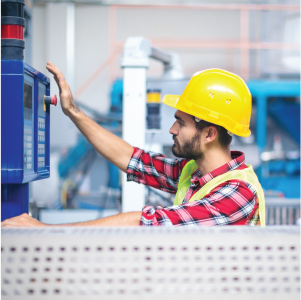
Generating Purpose Driven Innovation
While the U.S. vinyl industry is embarking on a formal, comprehensive industry-wide sustainability strategy, members from across the vinyl value chain have focused on the environmental, economic, and social aspects of sustainability for almost 50 years. As a result, the industry has driven improvements achieved at the resin factory floor all the way through the product manufacturers’ facilities. Here’s a brief snapshot of our key purpose-driven innovation.
A Culture of Safety
The 1970s were a period of tremendous innovation in the vinyl resin industry. During this time, resin manufacturers moved to a process of closed-loop manufacturing, which eliminated exposure for facility workers and establish a culture of safety that continues today.
By implementing technological advancements in resin production processes, the vinyl resin manufacturers not only made the entire process more efficient, it also accomplished significant reductions in emissions to air and water, and improved worker safety performance. All the while, resin production has increased during the same time period. And the industry continues to make incremental improvements leading to cleaner air and water, that are safer for workers and communities.
Smarter Resin Manufacturing
The vinyl industry also has made continuous improvements in the resin itself.
Capital investments in equipment have led to innovations in stripping out practically all the vinyl chloride monomer from the resin. This further reduced exposure to workers downstream who use the resin to create products.
Meanwhile, the vinyl chloride that is stripped out is recovered and reused in the resin manufacturing process, creating efficiencies and reducing waste.
Another area is in chlorine production, which is one of the building blocks used to make PVC resin. U.S. and Canadian resin manufacturers produce their own chlorine at or near their PVC resin facilities. This self-reliance for chlorine production minimizes the risks associated with chemical transportation and leaks from loading and unloading operations, and also reduces the industry’s carbon footprint and increases worker safety. The industry also no longer relies on mercury-cell technology to produce the chlorine used in PVC resin. Today, U.S. and Canadian resin manufacturers rely on chlorine produced using either diaphragm technology or membrane-cell technology process, which eliminates their reliance on mercury.
Elimination of Heavy Metal Stabilizers
The invention of alternative stabilization technology eliminated the need for stabilizers that contain metals, such as lead or cadmium. This technology was commercialized and has been used in the United States and Canada for the past 3 decades. The U.S. vinyl products manufacturers have led the way on this stewardship effort on a global basis.
Vinyl Product Innovations
The industry’s continuous performance improvement path is happening all across the vinyl value chain. Product manufacturers have made great strides in designing and building better vinyl floors, roofs, and more. A few examples include:
- Vinyl windows today have the structural integrity to support large panes of glass thanks to improvements in the quality of the resin being manufactured. Advances in additive technology have also led to the introduction of pastel and dark-colored vinyl window frames, providing new options for designers and end users.
- Today’s luxury vinyl tile (LVT) and luxury vinyl plank (LVP) products are a feat of design, engineering, and technological advancement. Bringing together multiple types of vinyl resins utilized to manufacture LVT and LVP. Manufacturers have the ability to create multi-layer products that are found everywhere from upscale hotels to restaurants, university housing, and even private homes because of the realistic visual appeal they provide in conjunction with excellent durability and ease of maintenance.
- Vinyl roof manufacturers have been at the forefront of doing more with less. These companies have established “takeback” programs in which they recover vinyl roofs at end-of life, reclaiming the materials and reincorporating the vinyl into their manufacturing process.
- Insulated vinyl siding, which is fused to a foam backing material to create an all-in-one siding insulation system, is providing home owners with an energy efficient building envelop that is virtually maintenance free.

